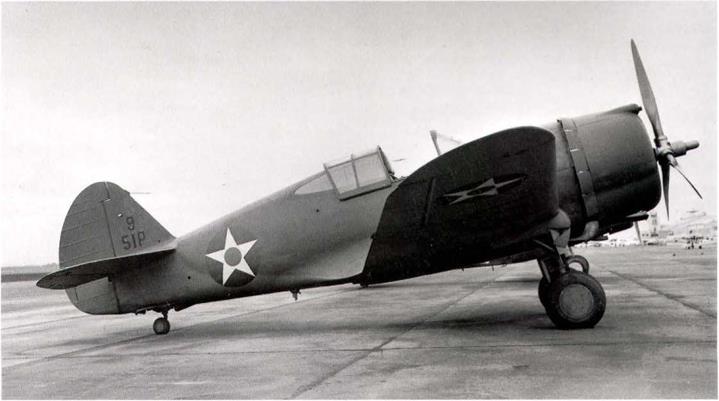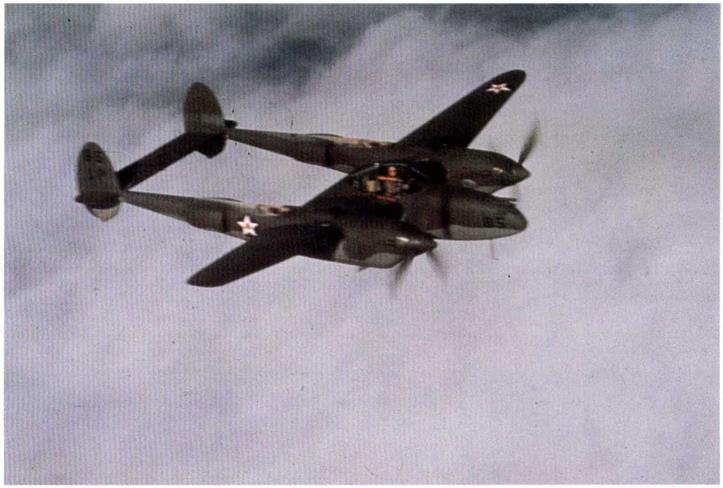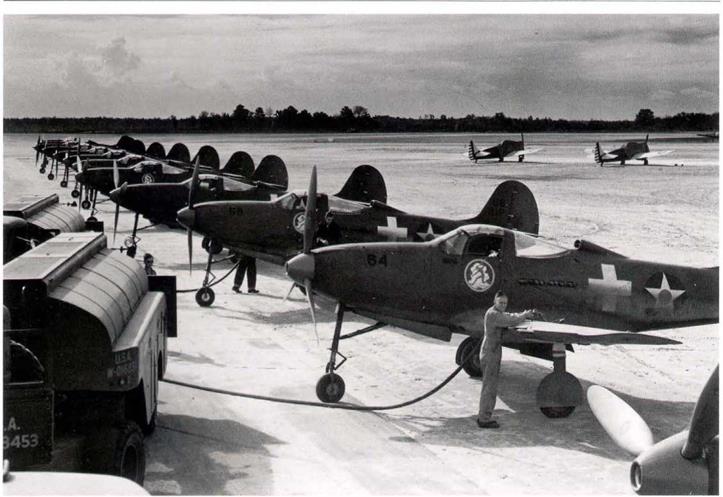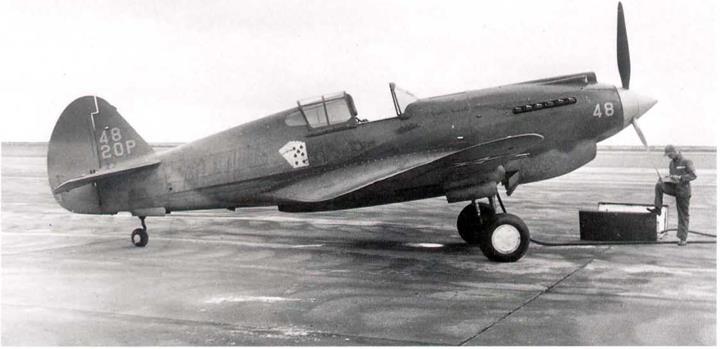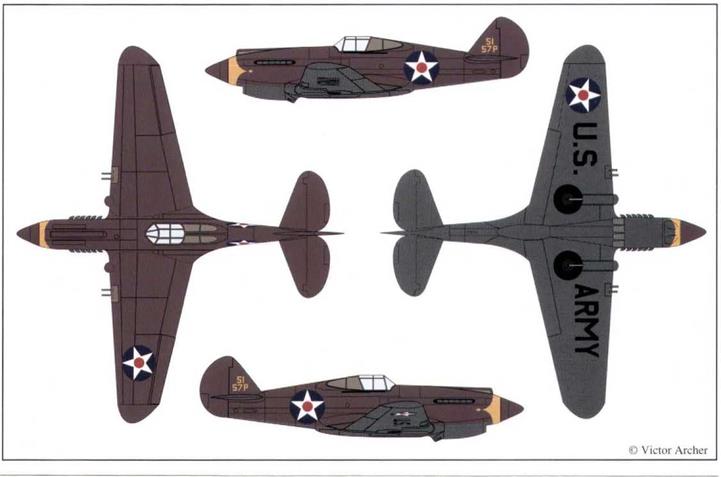Formation of the USAAF and. Response to Attack in the Pacific
The USAAF was formed after the war in Europe had been underway for more than twenty-two months, and it became obvious that it was only a matter of time before the USA became involved. By then, Nazi Germany had conquered Poland, Belgium, Holland, Norway, Denmark, and France, leaving only Britain to fight back alone.
Unable to defeat the Royal Air Force in the summer of 1940, Hitler abandoned his plans to invade England and began an all-out bomber campaign to force the British to come to terms. Meanwhile, he planned a huge offensive in eastern Europe against his erstwhile partner, the Soviet Union and finally launched this on June 22,1941 (this was two days after the formation of the USAAF).
However, Gen. Arnold, commander of the new USAAF, had foreseen the need for a huge expansion of the air forces and planning for just this had been taking place for several years. A great deal of cooperation had taken place with the British and many Air Corps aircraft had been sent to Britain though, obsolete as they were, their only effective use was in training. More importantly, a small force of B-17 heavy bombers in the RAF saw action over Germany and revealed many shortcomings. Re-design of the type into its B-17E version turned it into an effective heavy bomber which was to become the mainstay of the air war against Germany for the next four years.
Among the most important plans laid by Gen. Arnold was those for a huge training effort at all levels, resulting in a disproportionately large number of trainer aircraft to combat types. He also pushed the small American aircraft manufacturing base into a huge expansion of new plants all over the USA. The results of this are seen in the table showing the strength of the USAAF. When formed on June 20, 1941, it had the following totals of the main types of aircraft:
|
Fighters |
1,018 |
(P-35, P-36, P-38, P-39, P-40, P-43) |
|
Heavy bombers |
120 |
(B-17, B-24) |
|
Medium bombers |
611 |
(B-18, B-25, B-26) |
|
Light bombers |
292 |
(A-20) |
|
Reconnaissance |
415 |
(0-46, 0-52, etc.) |
|
Transports |
144 |
(C-33, C-46, C-53, etc.) |
|
Trainers |
4,124 |
(ВТ-9, ВТ-13, AT-6, PT-13, PT-19, PT-22, etc.) |
|
Grand Total |
6,777 |
(above plus miscellaneous types) |
Despite Arnold’s best efforts, the USAAF suffered grievous losses when the Japanese made their surprise attack on Pearl Harbor, December 7, 1941, and these continued when the Japanese bombed the Philippines, prior to invading on December 10,1941.
Thus, at the end of 1941, the USAAF had only suffered defeat, but 1942 would prove to be a different story, laying the foundations for the buildup of the biggest air force in history, reaching a peak strength of 79,908 aircraft in July 1944, only three years later.
All of these original USAAF aircraft were painted and marked in accordance with the latest versions of the applicable specifications evolved by the Air Corps and the GHQ Air Force. As described in the author’s earlier volume, covering the development of these specifications and requirements from 1908 to 1941, these two predecessors of the USAAF had arrived at very complete requirements for painting their combat and training aircraft.
OPPOSITE: Bell P-39Cs of the 31st PG, in May 1941. They are finished and marked to Spec. 24114 and carry the latest GHQAF designators on the fin. Propellers are camouflaged black; the squadron insignia has not yet been added to the new aircraft. Aircraft numbers 22, 23, and 30-31P are visible. These are typical of the aircraft taken over when the AAF was formed, incorporating the Air Corps and the GHQAF. (USAF)

US Army Air Forces specifications in use, revised, or issued, by date and version, during 1941. Includes earlier versions issued by the US Army Air Corps, until formation of the USAAF.
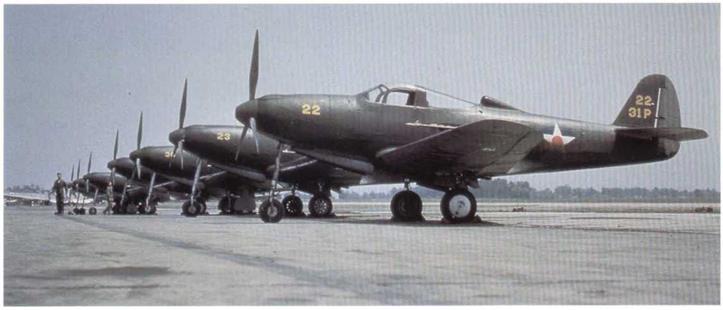
The letters indicate a letter revision of a spec., such as T. O. 07-1-1 A. The numbers indicate an amendment to an earlier version of a spec., such as Amendment No. 6 to Spec. 24114.
Existing Orders in Effect for Aircraft Marking, Insignia
and Camouflage when USAAF was formed, June 20,1941.
The principal War Department, Headquarters of the Army Air Forces, Washington, document for finishing requirements was Technical Order No. 07-1-1, entitled:
DOPES. PAINTS. AND RELATED MATERIALS. GENERAL –
AIRCRAFT MARKING, INSIGNIAAND CAMOUFLAGE.
The latest applicable issue of this T. 0. was dated April 8, 1941 and incorporated many references to other specifications. Relevant details from each of the referenced specs, have been provided at the end of the T. O. This information appears under the following headings:
Camouflage Finishes for Aircraft (Spec. 24114)
Colors for Training Airplanes (Spec. 98-24113-А)
Markings for Airplanes and Airplane Parts (Spec. 24105)
Standard Insignia (Spec. 24102)
The T. O. read as follows:
This technical order replaces Technical Order 07-1-1 dated May 15, 1940, and all previous instructions on airplane camouflage in conflict herewith.
NOTE: The camouflaging of airplanes directed herein will be accomplished as soon as practicable by Service Activities having the necessary equipment, or if necessary, at Depots as arranged with the Control Depot.
TABLE OF CONTENTS
1 Camouflaging of Airplanes.
2. Color of Painted Surfaces of Training Airplanes.
3. Identification Numerals for Training Airplanes
4. Colors for Alaskan Department Airplanes.
5. Marking of Airplanes.
6. Standard Insignia.
7. Organization Insignia.
8. Organization Identification.
9. Command Recognition Stripes.
10. Names of Combat Crew.
11. Paint to be used.
|
Curtiss P-36A, aircraft no. 5 of the 51st PG, at Oakland Airport, California, in 1941, shows the dark olive drab No. 41 and neutral gray No. 43 camouflage and markings to Spec. 24114. The GHQAF designator is in black on the fin. Note how the dark olive drab swept up to the leading edge of the horizontal stabilizer. (Gordon S. Williams via William L. Swisher) |
1. CAMOUFLAGING OF AIRPLANES
a. Types of Airplanes to be Camouflaged: All U. S. Army Air Corps and Federalized National Guard airplanes will be camouflaged in accordance with A. C. Spec. No. 24114, with the following exceptions:
(1) Training types of airplanes.
(2) Airplanes of other types regularly used for training purposes by Training Centers.
(3) Airplanes operating in the Alaskan Department or in any country having similar climatic and terrain conditions. (See paragraph 4.)
b. Application of Camouflage materials over existing protective coatings: Specification camouflage materials in
kind can be satisfactorily applied over existing protective coating on airplanes, that is, specification camouflage lacquer over existing enamel finishes and specification camouflage dope over existing doped finishes.
|
Lockheed P-381), aircraft no. 96 of the 26th PS, 51st PG, from March Field, California, in November 1941. It is finished to Spec, 24114 and T. O. 07-1-1 of April 8,1941. Pilot was Lt. Chuck Dunning, who was to win a silver star. He was killed in action flying P-40s with the 51st PG in 1941. (Peter Bowers via William L. Swisher) |
|
|
|
|
The colorful appearance of the USAC aircraft changed drastically with the introduction of camouflage in 1940, as seen in these two Curtiss P – 36s of the 36th and 51st Pursuit Groups.
c. Appearance of camouflaged airplanes: Due to the highly pigmented content and dull finish of camouflage materials, camouflaged airplanes will not present as pleasing an appearance as the highly polished Alclad or glossy painted airplanes of the past. No attempt should be made to secure a polish or high gloss, as this will tend to defeat the purpose of the camouflage.
d. Maintenance of camouflage surfaces: Camouflage materials may have neither the adhesive nor the colorfast quality of specification paint materials used heretofore. It is anticipated that there will be minor chipping of the camouflage materials at the leading edges of airfoils, particularly if the airplane is flown through heavy rains. This chipping may be somewhat unsightly, but as long as the material affords a reasonable coverage of the surface, the finish should not be touched up, as the chipping effect is not objectionable from a camouflage standpoint and the additional weight derived through the continued touching-up process might become objectionable.
|
Lockheed P-38D, aircraft 65-IP, of the first unit to use the P-38. Standard camouflage and markings for 1941, (LlSAFj |
e. Types of Camouflage materials: Paragraph E-lb of A. C. Spec. 24114 permits the use of two types of camouflage materials on metal surfaces. Either of these types may be used, subject to provisions of subpara. b. It will be noted that the use of enamel, camouflage, Spec. 14109 on metal surfaces requires the use of but one (1) coat of enamel and that no primer coat is necessary. Results of tests indicate that the least effort that is made toward exactness in the application of camouflage materials, other than the satisfactory spraying on of the prescribed number of coats, offers the best results from the standpoint of camouflage value.
f. Use of special color of camouflage material: The basic color of camouflage material for the top surfaces of all camouflaged airplanes will be dark olive drab, Shade No. 41, A. C. Bulletin No. 41. However, to meet requirements where airplanes are operated over a terrain which is predominately green, the use of one coat of medium green, Shade No. 42, A. C. Bulletin No. 41, is authorized to supplement the top surface camouflage finish.
g. Identification Markings:
(1) All identification markings, insignia, designators and squadron and flight command stripes on camouflaged airplanes will be of specification camouflage materials and of colors conforming to the color shades outlined in A. C. Bulletin No. 41.
|
|
Bell P-39Cs of the 40th PS, 31st PG, being refueled during the 1941 annual maneuvers (the last prior to US entry into the war). The white cross is for identification in the maneuvers. fUSAF)
|
|
Curtiss P-40C of the 77th PS, 20th PG, at Oakland in 1941. It is camouflaged to Spec. 24114, but does not have the fuselage cocarde. The designator is in yellow, as are the spinner and the wheel covcrs. fPeter Bowers via William L. Swisher)
(2) Airplane designators for camouflaged airplanes:
(a) The designator used on the wings will be as specified in Paragraph 8 b, with the location and size as specified in paragraph 8 c. Insignia blue, shade No, 47 camouflage material will be used.
(b) The designator used on the vertical stabilizer and rudder will be as specified in paragraph 8 b, with the location and size as specified in paragraph 8 c. Black, shade No. 44 camouflage material will be used.
(c) Other identification markings, insignia, and organization identification will be as specified in paragraphs 5, 6, 7,
and 8.
h. Camouflaging of Propeller: The camouflaging of propellers as required in paragraph “E-5” of A. C. Spec. No. 24114 should be accomplished by spraying each propeller blade in the horizontal position and retaining the propeller in this position until the camouflaging materials have set, after which it will be necessary that the propeller be checked for balance.
|
Curtiss P-40C of the 65th PS, 57th PC, at Oakland in 1941. It is finished to Spec. 24114, but has a yellow designator. The marking on the nose is in yellow, with an olive drab spinner. (Peter Bowers via William L. Swisher) |
|
|
Tests indicate that one (1) coat of camouflage material on propeller blades offers adequate coverage. It is anticipated that this finish on propeller blades will chip and become unsightly after a period of time, however, no attempt should be made to touch up the surface of the propeller blades at any time until the propeller is overhauled, at which time the assembly will be repainted and balanced.
j. Because of the magnitude of the work involved, and the emergency conditions now existing, all service activities will make every effort, before contacting the depots, to accomplish the camouflage work specified herein with equipment and facilities already on hand or that can be made available locally. When climatic conditions permit, the work may be accomplished out of doors, or in the lee of hangars or other buildings when partial protection from excessive wind is necessary. It should be borne in mind that essentially all paints, dopes and lacquers are of a toxic nature and inflammable; accordingly, precautionary measures should be exercised in handling and application.











